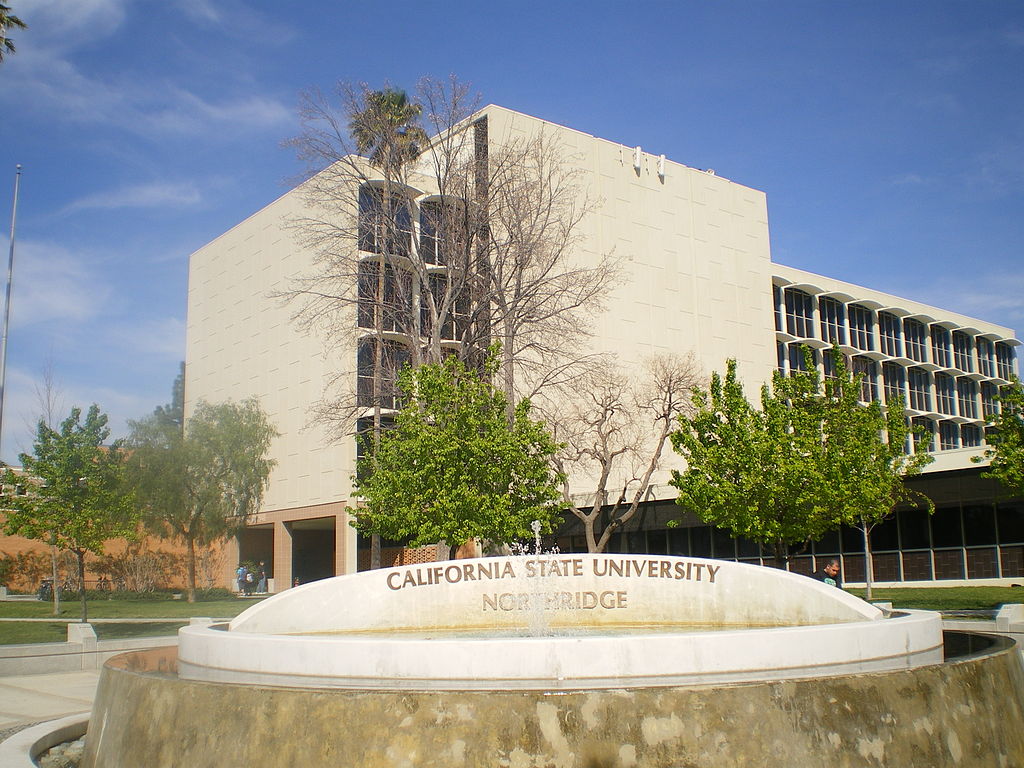
Since 2015 I have been conducting research on environmental values among Spanish-speaking Catholics in Los Angeles, a project that was inspired by class discussions with my students at California State University, Northridge. The first-generation college students who have filled my classrooms over the last ten years have challenged me to rethink everything I thought I knew about environmentalism and the study of religion and the environment. The following is a letter addressed to my future students, introducing them to the lessons I learned from their predecessors and inviting them to draw from their own experiences and perspectives as we continue to refine this academic field.
Dear Students,
Thanks for enrolling in RS 370: Religion and the Environment. While some of you are here because you are religious studies majors or because you’re interested in environmental sustainability, students often take this class because it fills a General Education requirement and meets at a time that works for their busy schedules. Whether you bring a personal interest in the course topic or you are here to complete the GE requirement, welcome to the class! I hope RS 370 will challenge you to rethink your ideas about what it means to be an environmentalist and encourage you to identify how your own background, knowledge, and experiences can help shape efforts to heal and repair the planet.
Students often enter this class thinking that the course material will have little to do with their own lives and communities, because they have inherited the message that people like them are not environmentalists. As you know, California State University, Northridge is a Hispanic-Serving Institute where more than half of the students are the first in their families to attend college and more than half are eligible for Pell grants. Our student population does not align with the White, middle-class dynamics that predominate in American environmentalism. Even though ecofriendly practices such as commuting on public transit, conserving energy, avoiding consumerism, and minimizing waste are common behaviors within the CSUN community, many students insist that those behaviors don’t count as environmentalism when they are motivated by financial considerations rather than “virtuous” environmental commitments.

A major goal of this class is to help us identify and challenge the unmarked assumptions that have led to such limited notions of who can be an environmentalist and what can count as environmentalism. In my own research among Catholic churchgoers in Los Angeles, local community members have suggested that Latinx Catholics do not prioritize environmental issues because they are focused on other challenges such as immigration and economic struggles. A Cuban-American priest I call Fr. Ruben explained that his parishioners were in “survival mode” and were too overwhelmed to worry about the problem of a changing climate. He encouraged me to conduct my research in wealthier, White communities where Catholic churchgoers had the “time and luxury” to worry about the environment. Yet when I spoke with working-class, Spanish-speaking Catholics through focus groups and ethnographic interviews, my interlocutors shared rich traditions of loving and caring for God’s creation.
Throughout the semester we will consider how the misperception that working-class, immigrant communities and communities of color don’t care about the environment is an expression of settler colonialism and its secular understandings of the relationship between humans and the earth.
Political theorist Erin Wilson notes that conversations about climate change are often marked by an intuitive sense of danger and fear, as climate change is perceived as a threat that humans must contain and control. To be sure, fear is a logical response to the reality of a changing climate, Wilson writes, and humans do need to take serious actions to mitigate the dangerous consequences of climate change. But Wilson notes that the widespread fear of climate change is based on more than scientific evidence, and is “somehow embedded in the fabric of our being” (98). This is because Euro-American culture has often viewed humans and nature as separate and unequal, and understood nature as an object for humans to enjoy, study, and control. Climate change is felt as a deep, existential threat, because it represents “a potential fundamental disruption to that (perception of) control and the subordination of nature to humanity” (98). This helps explain why responses to climate change center on “rational” responses rooted in science, technology, and economics and marginalize understandings and approaches rooted in experience, tradition, and place.
Notions of nature as an object also shape broader discourses of environmentalism. American environmentalism is indebted to conservationist and preservationist history, which have often constructed nature as wilderness: sublime landscapes of natural beauty idealized as sacred and set apart. In these constructions, humans ought to protect nature through a sense of “biocentric humility,” and not out of their own anthropocentric interests. In the United States, geographer Nicolas Howe tells us, visions of nature as sacred and set apart are enshrined into the law. While nature has not been accorded standing in and for itself, citizens have a right to protect the land “for aesthetic, recreational, or spiritual reasons” (132).
Environmental justice advocates have challenged constructions of nature as wilderness for decades, insisting that environmentalism is about protecting the places where people “live, work, play, and pray.” Brazilian feminist theologian Ivone Gebara describes environmentalism as a struggle for survival among the poor. Yet despite these myriad voices, American environmentalism retains a tacit moral valence insisting that true environmental actions must be motivated by pure concern for the earth and not by seemingly lesser concerns for human survival. This is the viewpoint that Fr. Ruben expressed when he told me that his parishioners were too overwhelmed to speculate on the causes of global warming. This is also the viewpoint that many of my previous students expressed when they insisted that they were not engaged in environmental acts when they commuted to campus on public transit, since they rode the bus due to financial considerations and not out of concern for the environment.
In my research among Spanish-speaking and bilingual churchgoers across Los Angeles, my interlocutors routinely shared stories that defied the widespread stereotype that working-class communities of color do not care about the environment. Some daughters and sons of immigrants did identify with constructions of nature as wilderness. They enjoyed visiting national parks and associated environmentalism with campaigns to fight climate change and to enjoy and protect the natural world.
But many others expressed environmental values that were not legible within dominant environmental frameworks, in part because they rested on theories of human continuity with and dependence on the land. First-generation immigrants often described a sense of love and kinship with the more-than-human world, describing an affective bond that was especially rooted in memories of agricultural landscapes back home. Roger, a thirty-something churchgoer who I met during a focus group at his working-class, Spanish-speaking parish, told me that “God created everything, and we have to love all of creation.” For him, causing damage to nature was akin to “seeing a brother in the streets and not helping him” and cutting down trees was equivalent to “scorning a brother.”
The bilingual daughters and sons of immigrants also shared stories of relating to the land, but they tended to think of God’s gifts as resources much more than relatives, and their stories integrated biblical teachings with environmental lessons they had learned based on their parents’ and grandparents’ agricultural experiences back home. When I talked to Robert, a 25-year-old charismatic Catholic and the son of immigrants from Jalisco, Mexico, he told me that he loved nature and spent as much time as possible outdoors. He liked to escape to the mountains and beaches that were a short drive from his home in south central Los Angeles, but he also felt a sense of peace when surrounded by the trees, birds, flowers, and leaves in his own neighborhood.

Robert attributed his love for nature to his Catholic faith, explaining that the world around him was full of beauty because it was created by God. God gave humans the gift of creation, he explained, and humans were required to protect it. He also attributed his connection with nature to his identity as a Mexican American son of immigrants, explaining that his mother and many other families in his neighborhood came from agricultural backgrounds and cultivated backyard gardens to provide tomatoes, onions, corn, herbs, and other vegetables for their families to eat. In addition to loving nature because it is God’s creation, Robert knew it was important to take care of the planet because humans need a flourishing planet earth in order to survive.
These interlocutors shared stories of living sustainably on the earth, yet their perspectives are seldom reflected in dominant discussions of climate change that center on modern scientific, technological, or economic responses to a looming crisis (Wilson 99). My interlocutors’ relationships with the earth were based on mutuality and dependence much more than domination or control; they understood the earth’s systems in part through their understanding of a God who is not available to scientific inquiry.
In order to address the problem that certain secular perspectives are favored in climate politics while many other perspectives are marginalized, Erin Wilson calls for a “multiple-ontologies” approach to climate change science and policymaking (112). This approach, Wilson explains, “requires holding two seemingly contradictory commitments at the same time.” It means embracing one’s own assumptions and commitments “while recognizing that the assumptions and commitments of other—perhaps wholly contradictory—ontologies and worlds are equally as valuable; that our own ontology may not be the ‘correct’ or ‘real’ version of reality” (114). A multiple-ontologies approach, Wilson suggests, is essential for climate justice and for developing effective, imaginative responses to the climate crisis.
For many of the first-generation college students who enrich our classrooms at California State University, Northridge, embracing multiple ontologies is a matter of daily life. While they have learned to navigate the secular world of the modern university, they also remain intimately tied to the resilient, land-based communities of their ancestors, who knew what it meant to rely on the earth and who cultivated relationships of gratitude, mutuality, and respect. Previous students have told me about plant-loving tias who talked to their flowers as if they were their own children, subsistence farming grandfathers who did not have enough to eat when the rain did not come on time, and the backbreaking labor of parents, aunts, and uncles who toiled as migrant farm workers in the fields of central California. Over and over again, students have written about childhood lessons where they had learned that you must take care of the earth because the earth takes care of you.
Throughout the upcoming semester, I hope that you will embrace a multiple-ontologies approach and reflect deeply on your own background as we discuss how human communities have lived under the conditions of a changing climate. Some of your families have long histories of environmental engagement as camping enthusiasts, Sierra Club members, and activists in the Mothers of East Los Angeles. Others may have backgrounds that are less obviously “environmental,” but I suspect that those students have stories to offer as well.
My dream for this semester is that we will all have a chance to learn from each other, remaining open to varied ontologies and perspectives that are desperately needed. Regardless of your reason for enrolling in this class, thank you for joining me on this journey.
Sincerely,
Professor Baugh
Suggested Reading
Amanda J. Baugh, “Explicit and Embedded Environmentalism: Challenging Normativities in the Greening of Religion.” Worldviews: Global Religions, Culture & Ecology 23, no. 2 (2019): 93–112.
———. “Nepantla Environmentalism: Challenging Dominant Frameworks for Green Religion.” Journal of the American Academy of Religion 88, no. 3 (2020): 832–58.
Erin K. Wilson, “Cast out Fear: Secularism, (in)Security, and the Politics of Climate Change,” in Climate Politics and the Power of Religion, ed. Evan Berry (Bloomington: Indiana University Press, 2022).
Ivone Gebara, Longing for Running Water: Ecofeminism and Liberation(Minneapolis, MN: Fortress Press, 1999).
Nicolas Howe, Landscapes of the Secular: Law, Religion, and American Sacred Space (Chicago: University of Chicago Press, 2016).
Sarah McFarland Taylor, Ecopiety: Green Media and the Dilemma of Environmental Virtue (New York: NYU Press, 2019).

